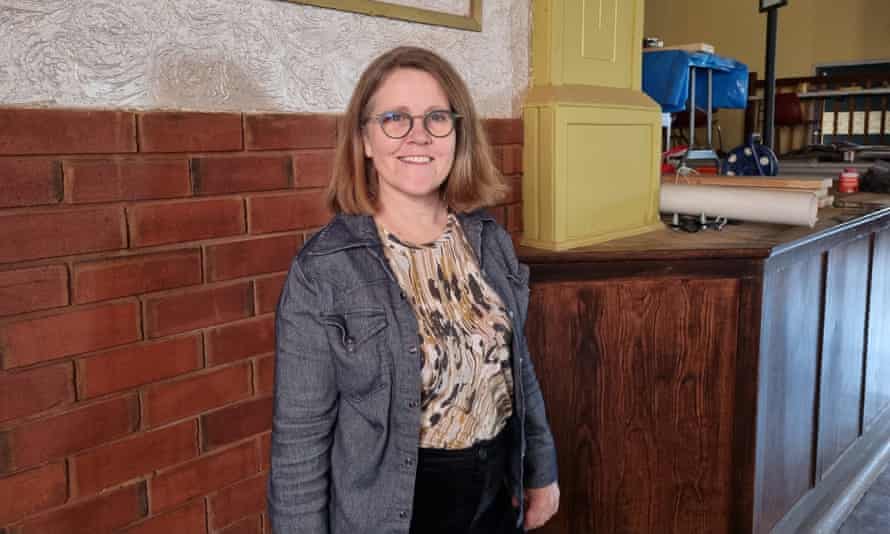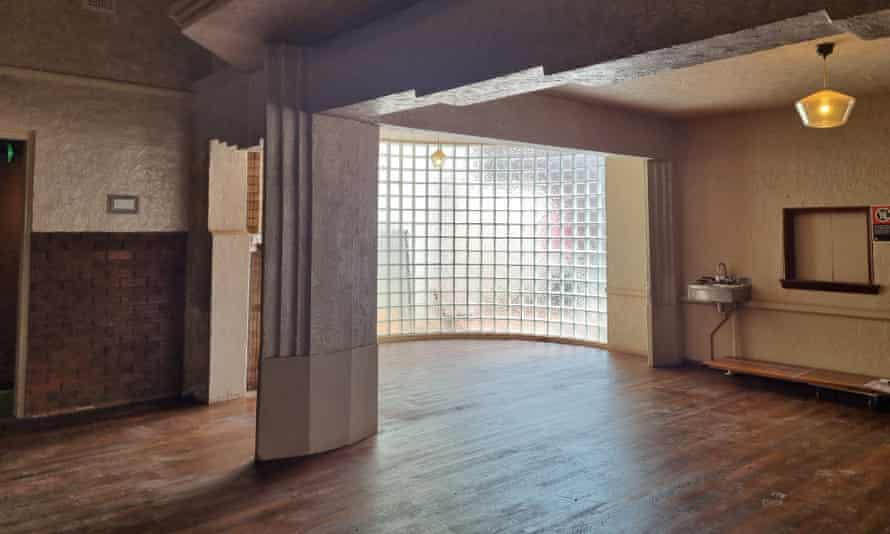After a 40-calendar year intermission, the historic Malachi Gilmore corridor at Oberon has thrown open up its doors with a overall performance of The Rivoli by Sydney’s Dance Makers Collective. The substantial-energy touring display – a celebration of mid-century dance halls and their communities – displays some thing of the venue’s chequered historical past.
The art deco gem, acknowledged affectionately as the Malachi, was developed in 1937 and after sat centre-stage in the New South Wales central-west city.
As co-proprietor Lucy East points out, the location served as a cinema, dance corridor and roller-skating rink, with a supper place downstairs. By the 1970s and 80s, television and online video suppliers ended up robbing cinemas of patrons, and Friday evening dances fell out of trend. In 1982, the Malachi shut its doorways to the general public.
Till 2017, it operated as a warehouse for wool bales, with a little craft shop out the front a relatively undignified hiatus for a making that had for so quite a few decades acted as the social hub and beating heart of the group.
East discovered the assets was for sale during a road journey that yr.
She has one-way links to Oberon – her grandfather was born there – but wasn’t conscious her family members experienced a relationship to the Malachi. A conversation with her father disclosed that the cinema’s initially projectionist was her excellent-uncle.
East, a visual artist with a qualifications in new music education and learning, claims: “I required a thing that was heading to spark creativity and local community. It was a best healthy.”

Struggling with bushfires then Covid
With its eye-catching, geometric façade and curved glass brick wall, the Malachi is thought of a one of a kind example of the interwar artwork deco period of time, a motion that embraced and embodied modernity.
It was made by architect Virgil Cizzio, who subsequently labored on Sydney’s Fantastic Southern Lodge and the Imperial at Erskineville.
Architect and senior heritage specialist Roy Lumby describes the Malachi as “one of the most striking public halls of the 1930s” in his book A Spirit of Progress: Artwork Deco Architecture in Australia.
Couple art deco theatres in Australia have retained their initial heritage value, and much less however are staying utilised in their first capability as cinemas or general performance areas.
In accordance to East, the Malachi was privileged to have been reasonably well-preserved through its stint as a wool store. When she and her partner, Johnny, acquired the setting up, several art deco aspects remained, somewhat neglected, such as the first proscenium arch above the phase, Caneite ceiling panels crafted from sugarcane refuse, and the extravagant rosy plasterwork.
Funding from the NSW government served return the state heritage-detailed developing to a practical location, and federal grants are in position to support with programming, internet marketing and technological guidance. But the reactivation confronted serious road blocks.
The primary start had to be cancelled when the 2019 Black Summer bushfires threatened close by towns.
“The band had been combating fires on their roofs, they closed the Terrific Western Highway, we were being 24 hrs out, and no one was in the temper,” East states. “So we just put this tiny observe up expressing we have acquired all this foodstuff, occur, we’ll have a very little bit of a dance.”
Then Covid hit. Theatres around the country fell silent, shows and festivals were forced to postpone or cancel entirely. But what transpires to the crowd when the clearly show cannot go on?

Dancers ‘spinning and grinning’
The Australia Council for the Arts has monitored shifts in dwell-viewers sentiment induced by the pandemic. It sees the arts enjoying a position in enabling restoration and re-relationship inside of communities, reviving tourism and the financial system.
Though regional audiences have been a lot more careful than their metropolitan counterparts to return to activities – perhaps due to the slower roll-out of vaccines in the regions – the reopening of the Malachi coincides with a rise in are living effectiveness attendance stages nationally.
In accordance to the Australia Council’s Dwell Attendance Outlook for March, 79% of audiences described building options to go to an in-human being cultural occasion in the close to long term, up from 74% in November, according to knowledge that consists of Australia’s regional carrying out arts venues and providers
Though preliminary ticket income have been sluggish – one more pattern the Australia Council noticed – the two performances of The Rivoli at the Malachi saw entire homes.
Some who joined the solid on the restored dance ground experienced rehearsed to be section of the performance, just after East advertised for residents to participate.
“The exhibit experienced eight fantastic modern day dancers spinning and grinning, taking the audience on a superb excursion from the structural methods of the Satisfaction of Erin to the strobe-lit hectic rate of a comprehensive-on rave,” she says.
“One of the Oberon citizens collaborating in the present was Nancy Dennis, 86, who, soon after her transform in the choreography, was observed instinctively tapping her foot to the climatic household music.”

With its proximity to Kanangra-Boyd National Park and Jenolan Caves, its focus on foraging and meals experiences and its neat-weather gardens, Oberon is nicely-placed to see an improve in cultural tourism.
East’s technique is one particular of inclusive goodwill, utilizing local tradespeople, providing front-of-residence prospects for locals and scheduling concerts of first music that will element area artists.
She’s also prepared a numerous line-up of activities, these types of as stage-to-display screen performances of Sydney festival productions, Indigenous stand-up comedy, and travelling artwork exhibitions.
“Everyone claims that no just one will ever take you if you’re a blow-in, that type of discuss about town-slickers, particularly arty types,” she says.
“I’m striving to be as inclusive as I potentially can mainly because we’re just custodians of this creating.”









More Stories
The Ten SolarScape Artworks | The Unfathomable Artist
Industrial Materials Reconstruct Local History on a Monumental Scale in Public Sculptures by David Mach — Colossal
12 Terrific DIY Projects for Your Art Room to Get Started On Immediately